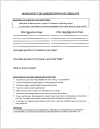Interactive "Video Doctor" counseling reduces drug and sexual risk behaviors among HIV-positive patients in diverse outpatient settings
- PMID: 18431475
- PMCID: PMC2292251
- DOI: 10.1371/journal.pone.0001988
Interactive "Video Doctor" counseling reduces drug and sexual risk behaviors among HIV-positive patients in diverse outpatient settings
Abstract
Background: Reducing substance use and unprotected sex by HIV-positive persons improves individual health status while decreasing the risk of HIV transmission. Despite recommendations that health care providers screen and counsel their HIV-positive patients for ongoing behavioral risks, it is unknown how to best provide "prevention with positives" in clinical settings. Positive Choice, an interactive, patient-tailored computer program, was developed in the United States to improve clinic-based assessment and counseling for risky behaviors.
Methodology and findings: We conducted a parallel groups randomized controlled trial (December 2003-September 2006) at 5 San Francisco area outpatient HIV clinics. Eligible patients (HIV-positive English-speaking adults) completed an in-depth computerized risk assessment. Participants reporting substance use or sexual risks (n = 476) were randomized in stratified blocks. The intervention group received tailored risk-reduction counseling from a "Video Doctor" via laptop computer and a printed Educational Worksheet; providers received a Cueing Sheet on reported risks. Compared with control, fewer intervention participants reported continuing illicit drug use (RR 0.81, 95% CI: 0.689, 0.957, p = 0.014 at 3 months; and RR 0.65, 95% CI: 0.540, 0.785, p<0.001 at 6 months) and unprotected sex (RR 0.88, 95% CI: 0.773, 0.993, p = 0.039 at 3 months; and RR 0.80, 95% CI: 0.686, 0.941, p = 0.007 at 6 months). Intervention participants reported fewer mean days of ongoing illicit drug use (-4.0 days vs. -1.3 days, p = 0.346, at 3 months; and -4.7 days vs. -0.7 days, p = 0.130, at 6 months) than did controls, and had fewer casual sex partners at (-2.3 vs. -1.4, p = 0.461, at 3 months; and -2.7 vs. -0.6, p = 0.042, at 6 months).
Conclusions: The Positive Choice intervention achieved significant cessation of illicit drug use and unprotected sex at the group-level, and modest individual-level reductions in days of ongoing drug use and number of casual sex partners compared with the control group. Positive Choice, including Video Doctor counseling, is an efficacious and appropriate adjunct to risk-reduction efforts in outpatient settings, and holds promise as a public health HIV intervention.
Trial registration: Clinicaltrials.gov NCT00447707.
Conflict of interest statement
Figures
References
-
- Palella FJ, Baker RK, Moorman AC, Chmiel JS, Wood KC, et al. Mortality in the highly active antiretroviral therapy era: Changing causes of death and disease in the HIV Outpatient Study. J Acquir Immune Defic Syndr. 2006;43:27–34. - PubMed
-
- Crum NF, Riffenburgh RH, Wegner S, Agan BK, Tasker SA, et al. Comparisons of causes of death and mortality rates among HIV-infected persons: Analysis of the pre-, early, and late HAART (highly active antiretroviral therapy) eras. J Acquir Immune Defic Syndr. 2006;41:194–200. - PubMed
-
- Centers for Disease Control and Prevention (CDC) Incorporating HIV prevention into the medical care of persons living with HIV. Morbidity and Mortality Weekly Report. 2003;52:1–24. - PubMed
-
- Centers for Disease Control and Prevention. Epidemiology of HIV/AIDS–United States, 1981–2005. Morbidity and Mortality Weekly Report. 2006;55:589–592. - PubMed




